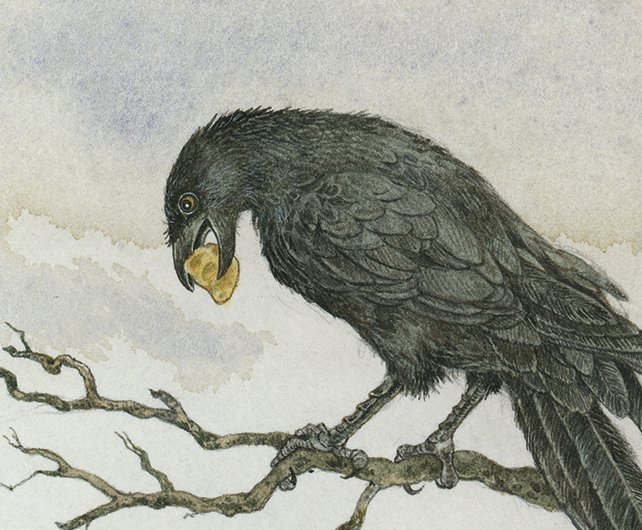
The Crow and the Fox
A crow was sitting on a branch of a tree with a piece of cheese in her beak, minding her own business. A fox came along and instantly noticed the morsel she held. Foxes are clever, as you know. Standing under the tree, he looked up and said, "What a elegant bird I see above me! Such beauty is unrivaled; the ebony hue of her plumage undeniably points to a regal heritage! I wonder if her voice is as lyrical as her outward appearance is captivating? Were it true, no doubt she would easily reign over all feathered creatures."
The crow was chuffed by such adulation, and just to show the fox that her voice was worthy of such flattery, she gave a loud caw. With this, the cheese fell to the ground at the fox’s feet. Of course the fox, snatching it up, said, "So it is true, madam. You do have a voice. What you lack is wit to match your other attributes.”
Aesop's Fables completely grasp the human condition, and exploit our less than desirable character traits. Since animals are the players, the tales can be told without pointing fingers. But their messages are clear. In choosing this as one of my illustrated fables, I wanted to show you its evolution. About 13 years ago, I painted this version for my son.
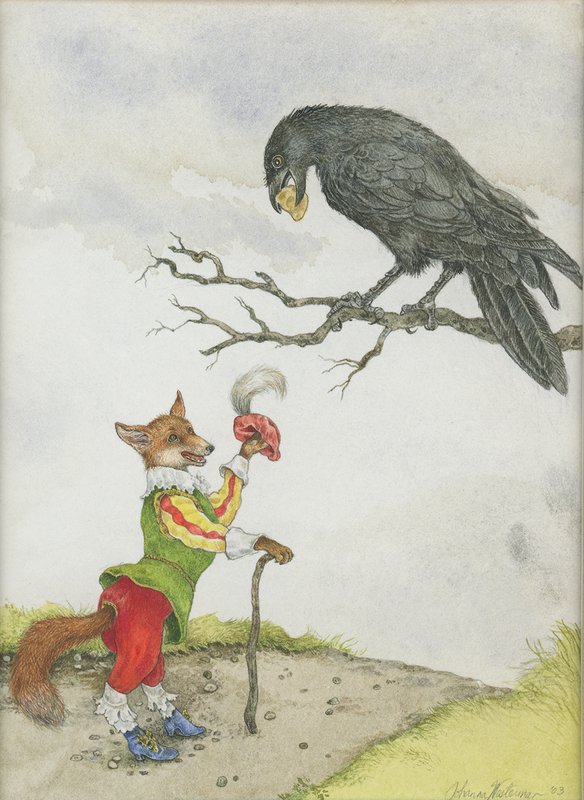
I anthropomorphized the fox in regal attire to go along with his cunning intellect. Dressed like a true gentleman, the crow could not resist his empty platitudes. But for my recent project, I wanted to keep the animals looking like animals. I wanted nothing to interfere with their habitat and positions. It forced me to strive for anatomical accuracy – something important to me in my work. Once you understand how the underlying skeletal and muscle systems work, you can them exaggerate your animal characters and make them adapt more human/relatable poses while not adding human legs or arms.
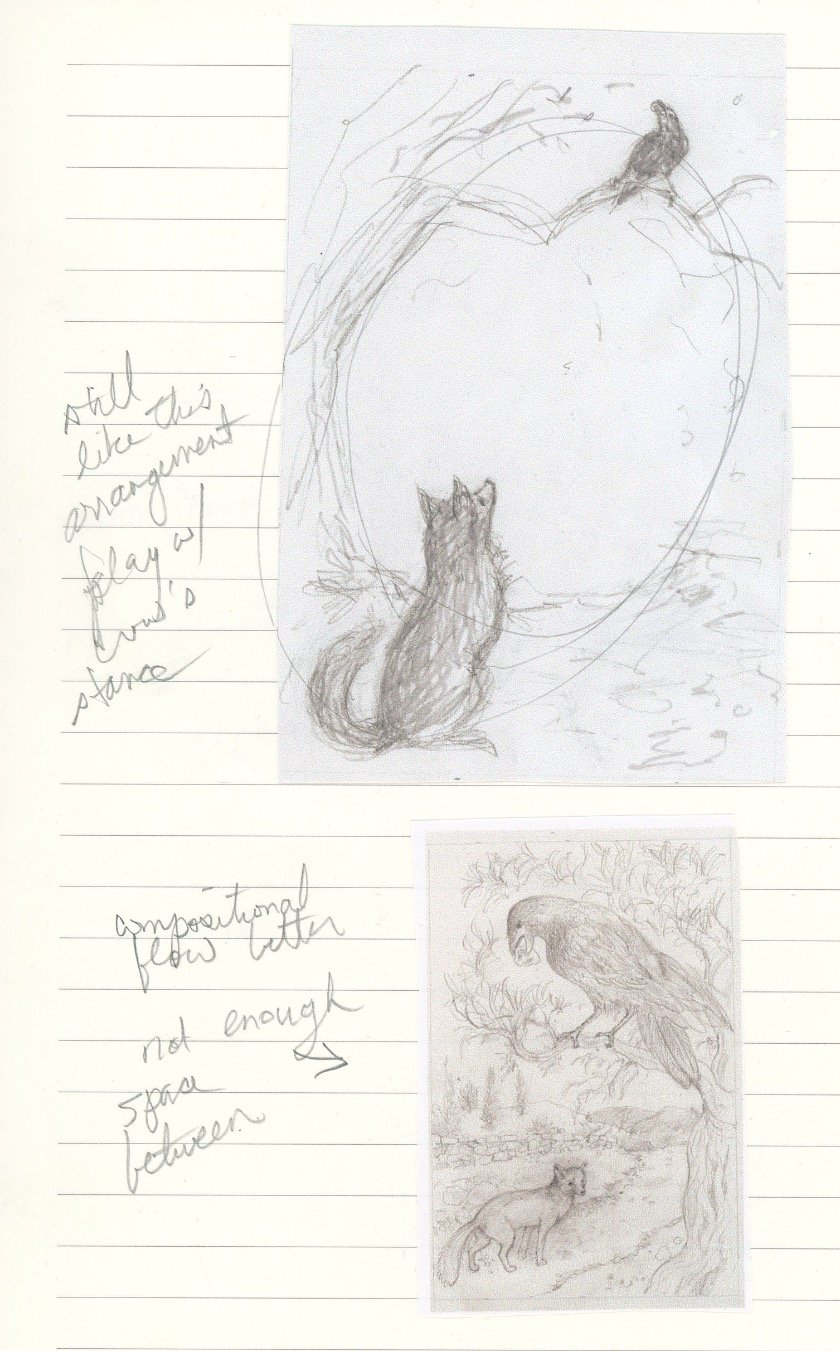
As you can see, the top sketch is the one I ended up fine tuning. I thought the fox would appear more interested in the crow if he was up on his hind legs. Otherwise the illustration was too stagnant.
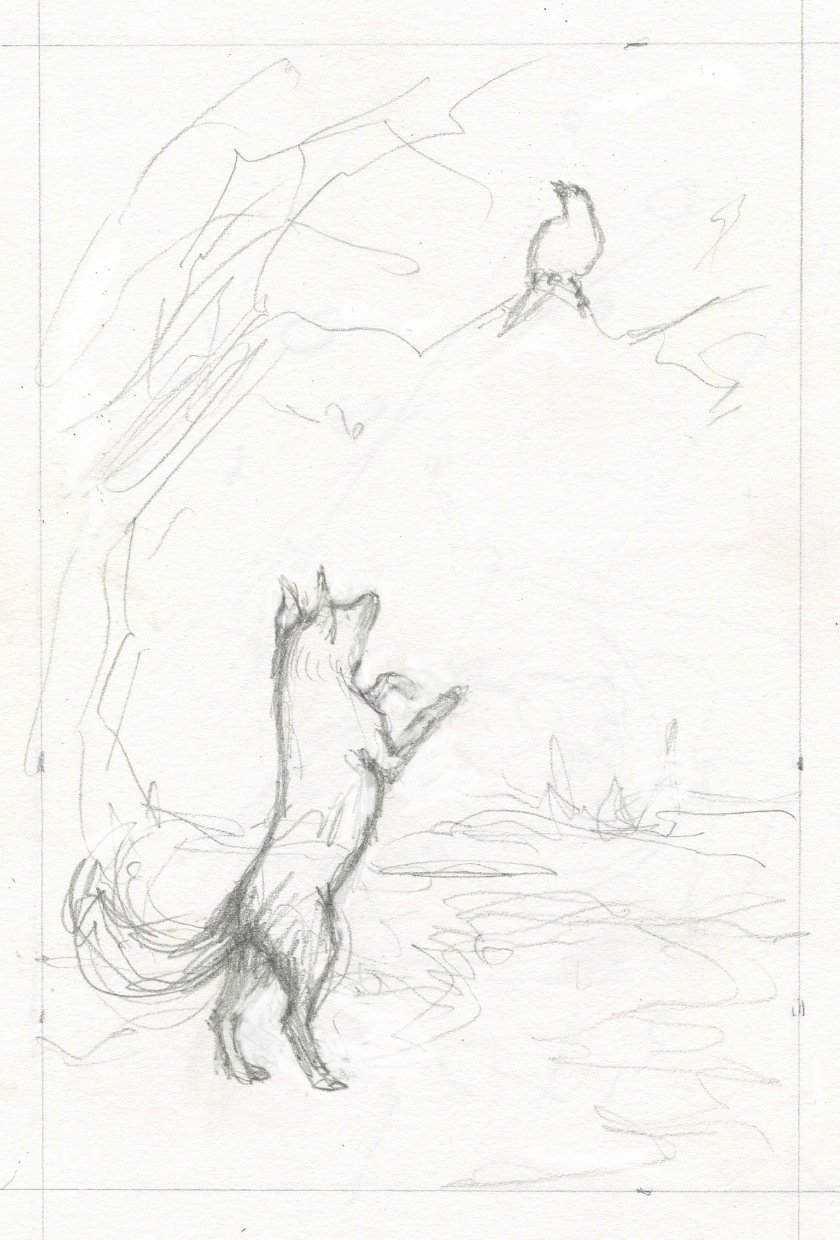
So I came up with this.
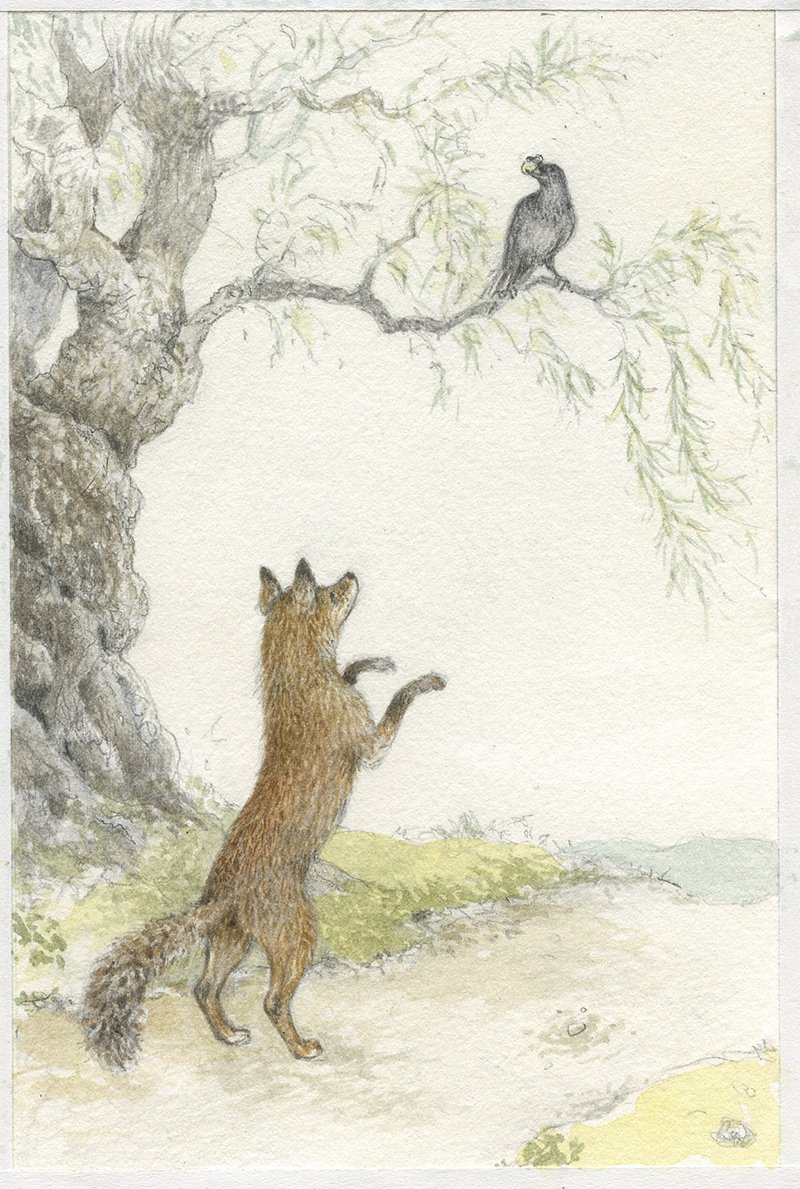
Here it is with its first washes of color.
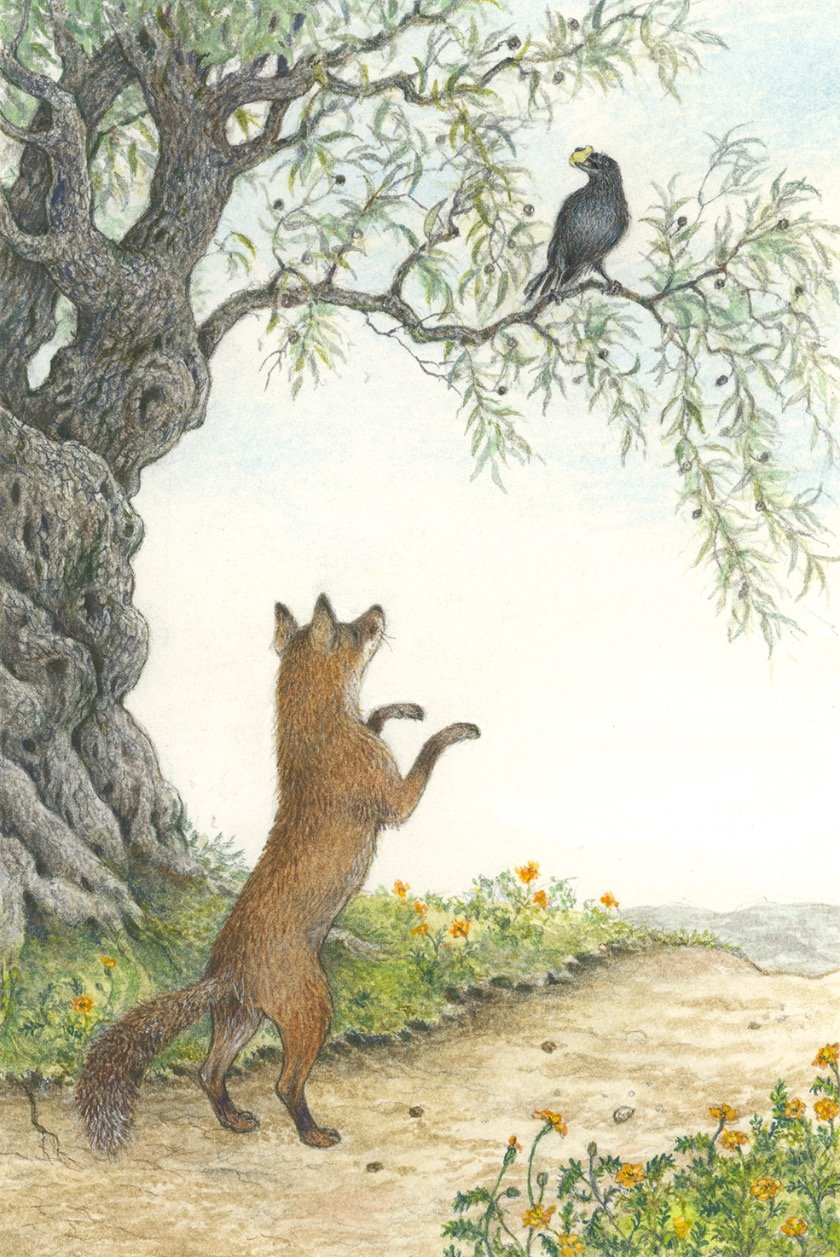
And the final painting.
Is the crow too trusting, or is she vain and needs approval for her own self worth? Are we to be wary of flattery? Who is doing the flattery and what is their possible motive for buttering you up? We instinctively know who is sincere and who isn't but often ignore that inside voice that tells us. Coming from a natural predator, the fox, (symbolic of trickery) his words should have been suspect to the crow. Ask yourself this. Does someone want something from you? Maybe the fox believes these things, but he’s a master manipulator and says them only to benefit himself. Manipulators know how to work the system so the odds are in their favor. They prey on our weaknesses and predictable human nature – namely, to be liked and accepted by others. The fox knew how to play the game. Was it ethical? Probably not, but he used his abilities to get what he wanted and it worked.
Beware of those who flatter; they may covet something you have.
The main question I have for you is this - do we applaud the fox or pity the crow?
Illustrations ©Johanna Westerman 2016
